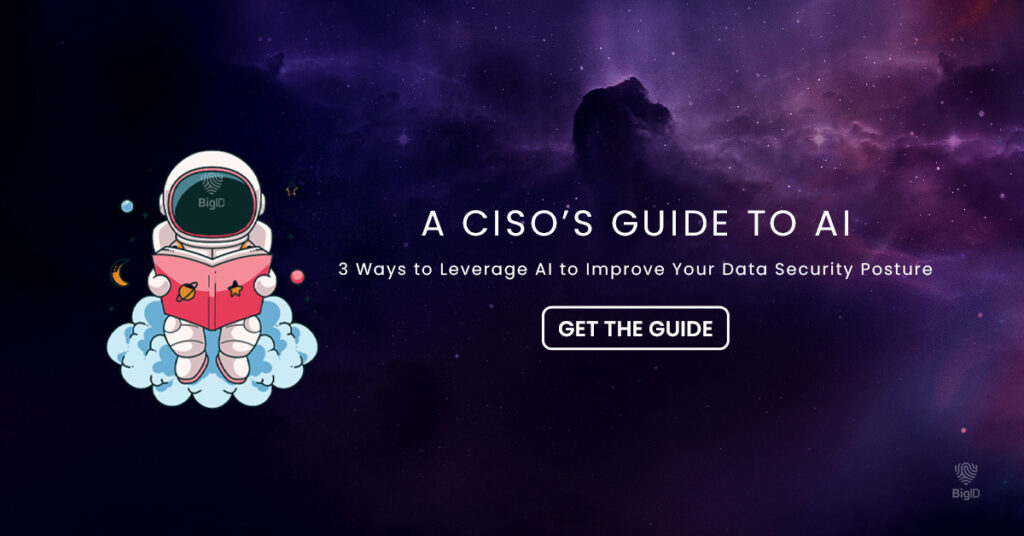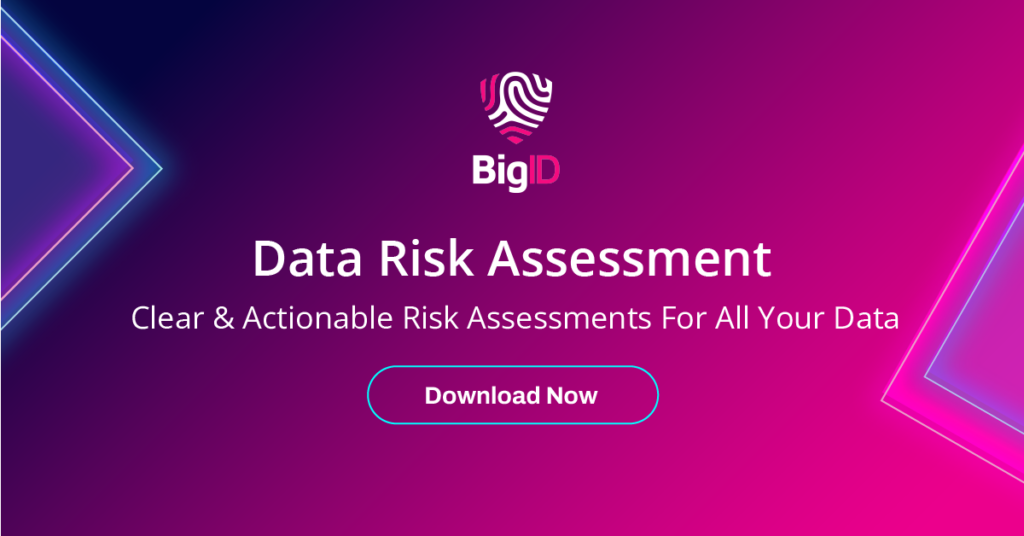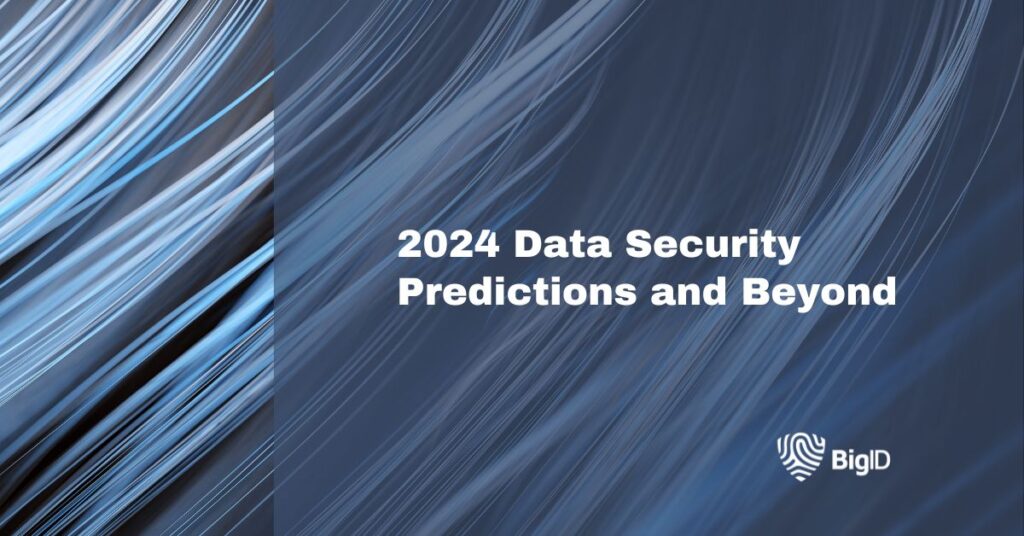To quote Peter Drucker, “The best way to predict the future is to create it.” As the future of data security takes shape, risk has come in many forms.
Over the last decade, nearly 4 million records have been stolen daily from breaches. Unfortunately, these incidents continue to be rampant, and with the growth of artificial intelligence (AI), the dynamic is only expected to complicate more in the coming years.
According to the World Economic Forum, “Cyberattacks are considered among the top ten risks to global stability.” So, preparing for what’s ahead can help guide your risk management strategies and help you proactively protect data and systems. This article will explore the top 8 data security predictions for 2024 and beyond.
1. Governing of AI to Mitigate Security & Privacy Risk
Artificial Intelligence (AI) and Machine Learning (ML) technologies are all the rage nowadays. The writing has been on the wall since the game-changing release of ChatGPT, and since then, the market surged with new AI tools. And with OpenAI recently handing users the keys to build their custom GPT models, we’re on the brink of an AI explosion involving organizations and individuals.
As these AI technologies expand their footprints across our daily processes, systems, and products, there will be increased governance on responsible usage. These public and private sector regulations will focus on how AI and ML-based technologies are built and trained, ensuring they stick to ethical and privacy standards.
We expect these regulations won’t be a one-size-fits-all scenario, varying depending on your region. However, organizations must comply with laws and frameworks governing what their AI models can do and the data they can access per location.
2. Incorporating AI to Pinpoint Security Risk
Security risks are growing, and organizations are still struggling to mitigate these threats that endanger business continuity. According to IBM’s 2023 Cost of a Data Breach, the average time to detect and contain a data breach is 277 days, about nine months!
That’s way too long. Can you imagine how much data hackers collected in that time?
In 2024, we expect companies to leverage the AI boom to solve potential data security risks. By incorporating AI, organizations can automate the detection of anomalies, potential threats, and vulnerabilities in real-time, allowing for a more proactive and responsive approach to security.
AI can analyze large datasets, detect patterns, and adapt to emerging threats, making it a valuable tool for identifying and mitigating security risks more effectively than traditional methods.
Learn more about navigating the AI landscape and enhancing data security posture.

3. A Progression Toward Security Tool Consolidation
Did you know organizations use an average of 47 cybersecurity tools to identify and contain threats?
It’s no surprise that IT staff often have difficulty tracking and monitoring each tool, meaning security risks might slip through. Moreover, maintaining so many tools is resource-intensive and increases overhead costs.
So, we predict organizations will adopt consolidation of security tools in 2024. Rather than using many tools for various security functions, we anticipate a shift towards adopting integrated or unified security platforms that offer a more cohesive and centralized approach to managing security.
Why not? It’s simpler and more effective.
For instance, Gartner introduced a concept called Cybersecurity Mesh Architecture (CSMA), which consolidates security tools, allowing them to interoperate through multiple supportive layers.
Even Gartner believes that by 2024, organizations that consolidate their security systems with such processes will reduce the financial impact of security incidents by 90%.
Organizations can benefit from better coordination, streamlined management, and improved visibility into their security landscape by having a more integrated suite of security tools.
4. Implementation of Cloud Data Security Posture
As enterprises increasingly rely on cloud services to store and process data, the need to safeguard sensitive information has never been more critical. Remember that they must also comply with data protection regulations and compliance in their industry or region.
According to IBM, data breaches in 2023 cost businesses an average of USD 4.45 million – 82% of which involves data stored in the cloud. That’s enough to cripple most businesses! You’d expect companies to do everything possible to ensure that doesn’t happen. And we agree.
In 2024, we anticipate an increase in establishing and maintaining robust security measures for data stored in cloud environments. This represents a proactive approach to addressing potential security vulnerabilities and unauthorized access.
As more data migrates to the cloud, implementing comprehensive cloud security measures will be a key priority to safeguard sensitive information, applications, and resources.
5. Quantum Computing to Break Traditional Encryption Methods
The rise of quantum computing brings a double-edged sword to the data security landscape. Just like the growth of AI, we expect these two sides of quantum computing to grow in 2024.
On the one hand, quantum computers will break traditional encryption methods, prompting more organizations to adopt quantum-safe encryption for robust protection against attacks.
On the other hand, quantum computing is becoming more accessible to threat actors and hackers. In anticipation of this, we predict organizations will adopt quantum-safe encryptions like Lattice-Based Cryptography and Hash-Based Cryptography to fortify their data defenses proactively.
6. Advanced Insider Threat Visibility
The reality is any organization can have a malicious insider. Data from the 2023 Insider Threat Report shows that 74% of organizations are vulnerable to insider threats. This highlights a growing concern for many companies as we head into 2024.
We predict that organizations will move beyond basic monitoring mechanisms and adopt advanced tools, technologies, and processes for detecting insider threats. These processes will ideally provide deeper insights into their employees’ activities, behaviors, and interactions within their networks.
Some effective strategies that organizations can adopt include stringent data-sharing policies, establishing Role-Based Access Controls (RBAC) and Privileged Access Management (PAM), as well as implementing data encryption measures.

7. Increase in AI-Based Data Breaches
Earlier, we mentioned how effective AI and ML are in pinpointing security risks. But just as AI can be an effective tool in the hands of ethical hackers, it can also be an ally to hackers.
This trend isn’t new. AI-enabled cyberattacks have posed an ongoing challenge for organizations since its inception. It’s a trend that will intensify in 2024, especially with advancing AI methodologies.
Hackers will likely use AI to analyze large datasets and attack strategies, enhancing their chances of success. Even deliberately poison training data to introduce vulnerabilities, backdoors, or biases, undermining the model’s security, effectiveness, or ethical behavior. They could also use AI to improve social engineering or malware-based attacks’ scale, scope, and speed.
Hence, fortifying data security measures becomes paramount to thwart the escalating threat of AI-based data breaches.
8. A Passwordless Future is Coming
To quote BigID CISO Tyler Young, “Something around the industry will shift to removing passwords altogether.”
That shift will potentially occur in 2024 as Apple, Microsoft, Google, and other tech companies are working with the FIDO Alliance on establishing ‘Passkeys”. Passkeys allow users to log in, similar to unlocking your phone, with a PIN or biometrics. The passkey is a step into the future as it’s being coined as “password 2.0.”
Since poor password hygiene, scams, and phishing consistently pose a risk, passkeys solve two significant problems: phishing and data breaches.
As the passkey brings us closer to the passwordless future, it may unlock a safer world for businesses and consumers.
Elevate Your Data Security With Proactive Risk Management
Preparing for what’s coming makes all the difference in managing data risks. Organizations with a proactive security posture are better equipped to identify potential data security issues, mitigate threats, and minimize the damage to their business.
BigID elevates your data security by proactively addressing critical risks. Achieve complete data control over your security posture and streamline data discovery, labeling, access, and policy enforcement.
Want to see BigID in action? Schedule a one-on-one with our security experts today.


